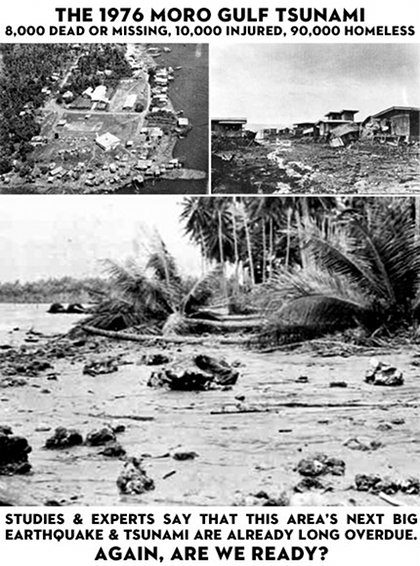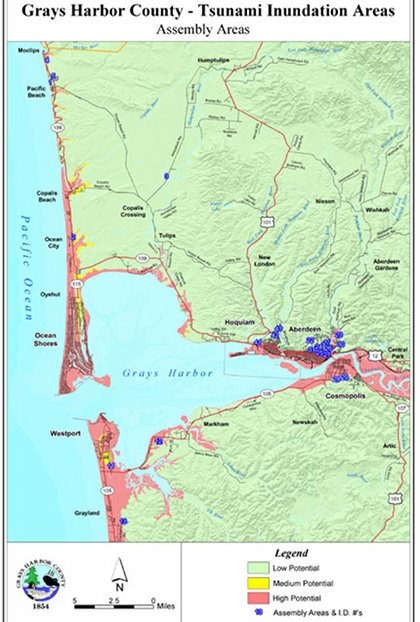SUMMARY
This is AI generated summarization, which may have errors. For context, always refer to the full article.
 #RememberJapan and #oneyearlater trended on Twitter last March 11, as the whole world expressed their positive words and prayers and remembered the grave earthquake and tsunami that devastated our Asian neighbor.
#RememberJapan and #oneyearlater trended on Twitter last March 11, as the whole world expressed their positive words and prayers and remembered the grave earthquake and tsunami that devastated our Asian neighbor.
In the last 12 months, the world stood witness as Japan rose up to the challenge of rehabilitating their country with such speed and efficiency.
While the sentiment is well and good, is it enough that we just remember? What does this mean for the Philippines, an equally calamity-prone country?
Last month, we met with local government leaders, civil society organizations and climate change and disaster management experts at the Mindanao Summit for Disaster Risk Reduction and Geo-hazard Awareness. Recounting the experiences and lessons learned from Sendong was a glaring reminder of how real the threat of climate change is, and the urgency of preparations for disasters.
Any part of the Philippines can be the next Marikina, the next CDO, the next Iligan.
We can even be the next Sendai, Japan.
Preparing for the worst
You may argue that tsunamis are rare in our country, especially if you’re living in an urban center such as Metro Manila. Sure.
But remember: just a few years ago, the people of Mindanao could still boast that the climate was the least of their concerns, as hardly any major typhoon passed by their key cities.
And they were right. But in the aftermath of Sendong, we all finally had to face a difficult reality – climate change can ravage the most unexpected of places.
Very few people remember this, but back in August 1976, a massive tsunami struck Moro Gulf within 15 minutes of a magnitude 8 earthquake. It was the most disastrous tsunami in the Philippines, leaving behind 8,000 dead or missing, 10,000 injured, and 90,000 homeless.
That was in 1976, when there were but some hundred thousand residents in the area.
Fast forward to today: there are now roughly 10,074,000 inhabitants in Moro Gulf. (The Moro Gulf, as it was in 1976, is composed of the provinces of Zamboanga del Sur, Maguindanao, North Cotabato, South Cotabato, Lanao del Norte, Lanao del Sur, Sultan Kudarat and the Basilan, Sulu and Tawi-Tawi islands, and the cities of Cotabato, Zamboanga and Pagadian. All these areas were hit by the August 1976 tsunami.)
What’s more, in the study done in 1978 by Fr. Victor Badillo and Zinnia C. Astilla of the Manila Observatory for the Special Committee on Tsunami Warning System, it is said that this area, the most tsunami-prone area in the whole country, has had roughly one great earthquake every 17 years since 1897.
August 1976 is 36 years ago. The earth beneath Moro Gulf is already what experts call “very pregnant.” When will the next big earthquake hit? Are we ready for that, and for the tsunami that’s surely to follow?
Steps local government units must take
Natural calamities cannot be prevented, therefore, planning is extremely vital.
I met with Fr. Badillo recently, who wrote the 1978 report, and he agreed that the ones who should be at the forefront of disaster preparedness planning are our local governments, as they know their localities a lot more than their national counterparts.
One of the simplest and most basic action steps for LGUs is to prepare inundation maps that are superimposed with street maps. These are street maps of towns that identify all the flood hazard areas, based on ground contours and other factors.
These maps will show which ones need to be evacuated, as well as areas of higher ground where citizens can relocate to in case of a flood or a tsunami.
This was an urgent recommendation made way back in 1976, in the study done by Fr. Victor Badillo of the National Tsunami Warning System Committee and Manila Observatory. As a matter of fact, it is now actually required by law in the Disaster Reduction and Management Act of 2010.
And as simple as they are to make, even the most tsunami-prone areas have yet to come up with the said map.
However, while inundation maps, research and information are good to have – if the people don’t know how to use them, or don’t understand them, then they are as good as useless.
An example is this very comprehensive tsunami inundation map of Grays Harbor County in the United States.
But as technically thorough and accurate as this may be, if you post this on its own on city websites or even barangay community boards – this might not make sense to a majority of individuals. Is everybody even clear on what “inundation” means?
There is an ever urgent need for disaster-preparedness information that is not only accessible, but also designed to be simple and understandable by everyone. LGUs need to prioritize this, whether they are located in disaster-prone areas or not.
The next step is putting that information into practice through drills.
Southern California has started an annual Great Shakeout, a statewide earthquake drill, which, on its first run in 2011, garnered the participation of 8.6 million Californians.
In Japan, where regular earthquake drills have been long part of their lives, many lives were spared because the people knew what to do. Even schoolchildren responded with impressive calmness, as they were familiar with the safety motions in the event of an earthquake.
We should build the same empowered state of preparedness in Filipinos.
Post-disaster needs assessment
Yet the harsh reality still stands, as we have witnessed from Japan’s experience: even the most earthquake-ready nation can only do so much preparation.
Another step that is often overlooked with the panic and chaos that continues even after a disaster, is the need for a structured post-disaster needs assessment. This is necessary to be able to provide information on the priority needs that must be mobilized, and to build a strategic and targeted rehabilitation plan for the next months.
This is a crucial step because not only does it give us long-term solutions, and references for disaster management strategies for future calamities, but it also promotes transparency and accountability.
A post-disaster needs assessment will be able to make sure that funds and aid that are poured in have targeted and identified use.
We must be able to institutionalize this step, so that the National Disaster Risk Reduction and Management Council and local government units can be equipped to perform this assessment rapidly and efficiently when the need arises.
Empower yourself
At the end of the day, disasters and disaster risk reduction is not an issue left solely for the government to deal with. Each individual must consciously arm him or herself with the knowledge and preparations needed in the occurrence of such calamities.
For example, the general belief is that you will be safe if you stand under a doorway during an earthquake. Yes you will, if your building is made of adobe. Otherwise, the basic instruction is to “Drop, Cover and Hold On!”
Chances are, most of you reading this have mostly only been on the aiding and donating spectrum of a disaster. It may not be very real to many of us, still.
But the floods of Sendong were very real to my fellow Mindanaoans from CDO and Ilagan. The floods of Ondoy were very real to the residents of Marikina. The tremors of the earthquake were very real to the citizens of Negros Oriental.
It is not enough to just #RememberJapan. The bigger challenge now is turning our hashtags into action. – Rappler.com
Add a comment
How does this make you feel?
There are no comments yet. Add your comment to start the conversation.